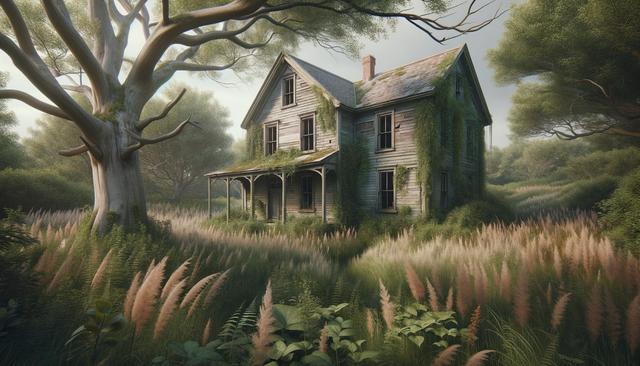The Lifecycle of an Abandoned House
When a house is left unoccupied for a lengthy period, its condition inevitably begins to deteriorate. The reasons for abandonment vary—some properties are vacated due to financial hardship, legal disputes, or inheritance complications. Over time, without regular maintenance and care, these homes fall into disrepair. Roofs may leak, mold can develop, and pests might take residence. Once a property is deemed unsafe, it can be condemned by local authorities, initiating a legal process that may lead to demolition or auction. Whether urban or rural, these structures often become a symbol of neglect, yet they also present layers of history and potential for those willing to explore or invest.
Before being repurposed or demolished, abandoned properties typically go through a lengthy paper trail. Municipal records, tax assessments, and ownership documents need to be reviewed, especially if someone is interested in acquiring the property. The process can be slow and complex, but it often uncovers important background information such as past ownership, unpaid taxes, and legal restrictions. Understanding this lifecycle is essential for anyone who wants to understand not just the physical, but also the bureaucratic decay of an abandoned property.
What Happens to Abandoned Houses Over Time?
As time passes, the structural integrity of an abandoned house suffers. Exposure to the elements, vandalism, and neglect all take their toll. Nature often reclaims these spaces—plants grow through cracks, animals seek shelter, and moisture seeps into walls and foundations. In some cases, these properties become hazards to the surrounding community. Fire risks increase, and the presence of mold or asbestos poses health concerns.
Here’s how abandonment typically affects a home over the years:
- 1–3 years: Minor decay such as peeling paint and minor roof damage.
- 4–7 years: Structural weakening, pest infestations, and overgrown landscaping.
- 8+ years: Major safety concerns including collapsed roofs, unstable flooring, and hazardous materials.
These changes don’t just make the home unlivable—they also reduce the property value and can affect neighboring homes. Local governments may eventually intervene if the property becomes too dangerous or unsightly, often leading to demolition or forced sale.
Legal and Financial Considerations
Getting involved with an abandoned house—whether to explore, purchase, or renovate—requires careful attention to legal and financial matters. Ownership of abandoned property can be difficult to determine, especially if the last known owner is deceased or unreachable. In some cases, properties are still owned by banks or are tied up in probate court. Prospective buyers or renovators must conduct thorough due diligence.
Important aspects to consider include:
- Outstanding property taxes and liens
- Title issues or unclear ownership
- Zoning regulations and building codes
- Costs for cleanup and structural repair
Local governments may offer incentives for rehabilitating abandoned homes, such as tax breaks or grant programs. However, these come with conditions, including strict timelines and compliance with safety standards. Before taking action, it’s wise to consult with a real estate attorney or a local housing authority to fully understand the implications.
Exploring Abandoned Properties Safely and Ethically
Entering an abandoned house might seem like a thrilling adventure, but it comes with risks—both physical and legal. Many of these properties are considered private property, and trespassing can lead to legal consequences. In addition, unstable structures, exposed wiring, and hazardous materials can pose serious dangers.
If you’re considering visiting or documenting an abandoned site, keep these safety tips in mind:
- Always obtain permission from the property owner or local authorities
- Wear protective clothing including gloves, boots, and a mask
- Do not go alone; bring a friend for safety
- Avoid climbing unstable stairs or entering compromised rooms
Ethical exploration also means respecting the property and its history. Avoid taking items or damaging the site further. Many urban explorers document these spaces through photography or storytelling, helping preserve the memory of a place even if it can no longer be saved.
Opportunities Hidden Within Abandoned Homes
Despite their condition, abandoned houses can offer unique opportunities for those with vision and resources. Renovation projects, especially in areas undergoing revitalization, can turn a neglected property into a valuable asset. Some cities even operate programs that allow individuals to purchase abandoned homes at reduced prices if they commit to rehabilitating them within a set period.
Potential opportunities include:
- Affordable entry into real estate investment
- Historical preservation and architectural restoration
- Community revitalization through housing projects
- Personal creative projects like art studios or workshops
That said, these opportunities are not always straightforward. Renovation costs can exceed initial estimates, and the process may uncover hidden issues such as foundation damage or outdated wiring. Still, for those willing to put in the effort, transforming an abandoned home can be a rewarding experience that contributes positively to local communities.
Conclusion: A Window Into the Past and Future
Abandoned houses are more than crumbling walls and broken windows—they are silent witnesses to personal histories, economic shifts, and changing communities. While they may pose challenges, they also offer opportunities for exploration, learning, and renewal. Whether you’re curious about their stories, considering investment, or drawn to their haunting aesthetics, understanding what happens to abandoned homes is essential before stepping inside. With respect for safety, legality, and history, these forgotten structures can become meaningful parts of the future once again.




Leave a Reply